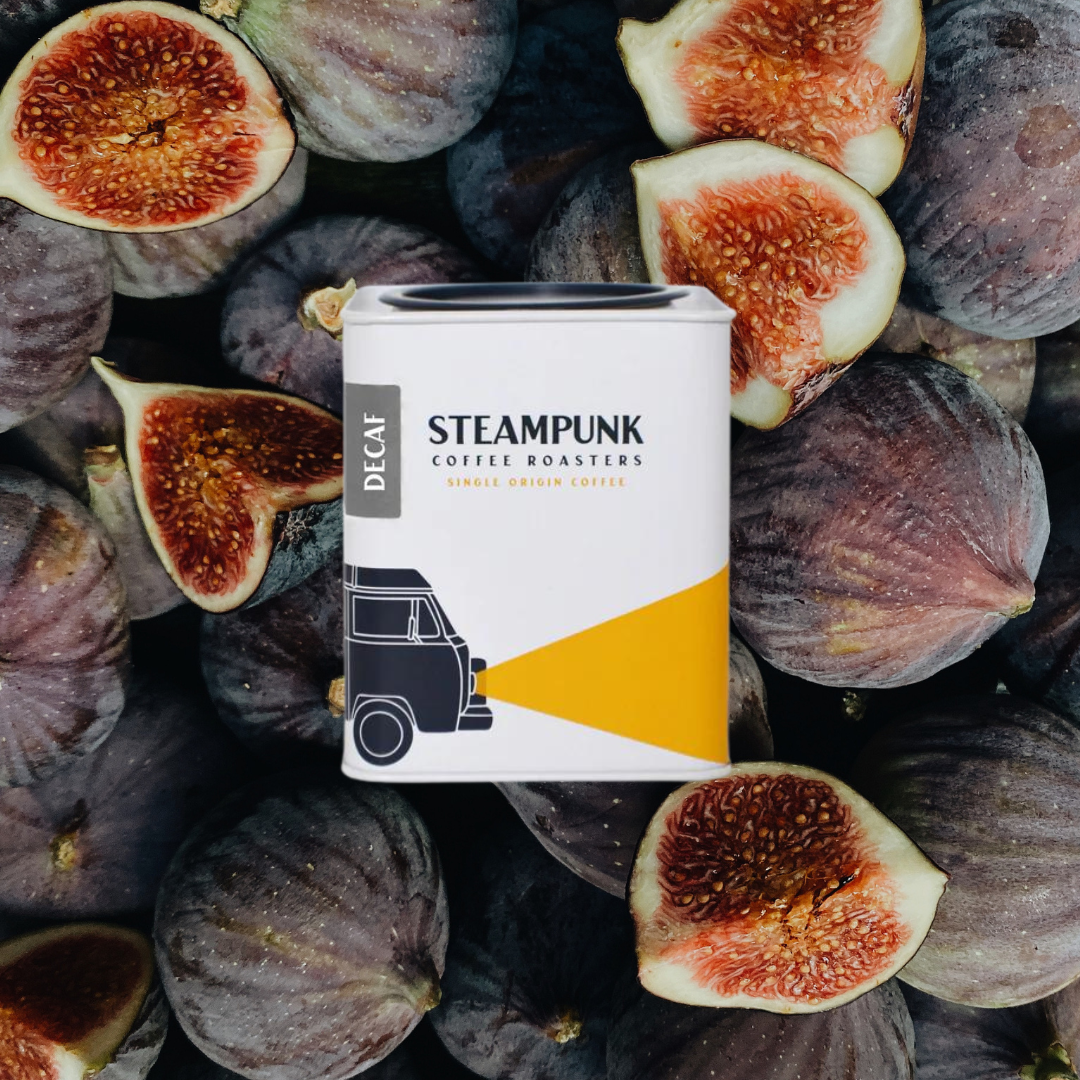Steampunk - Colombia/Atunkaa [DECAF]
Origin
Colombia/Atunkaa
Variety
Processing
natural, sugarcane decaf
Altitude
1,700 - 1,900 masl
Roast Profile
Omni-roast
Taste Notes
Notes of dried fig, sultana, hazelnut and cacao.
Coffee Facts
This coffee was decaffeinated using naturally derived ethyl acetate from sugarcane, hence the name. In fact, all decaf starts as normal caffeinated green coffee that is soaked in a solution to chemically bind to the caffeine and and draw it out through osmosis. Given that decaffeination changes the bean on a cellular level it can be a challenge to find one that still has the flavours of the original bean. This is one of the few that does.
It was grown in Colombia and brought to us through the importer Falcon Coffee working in partnership with Siruma, a Colombian coffee exporter founded five years ago with the mission of partnering with underserved farming communities in Cauca, Caldas, and Tolima. The company's name comes from the indigenous Wayuunaiki language and means "Heaven and Skies." The Atunkaa natural sugarcane decaf showcases Siruma's commitment to transparency and fair prices for farmers. It is sourced from the Central Cauca Association for Peace (ACC) in Piendamó, Cauca. ACC was created by a local farmer who wanted to add value to Castillo coffee and provide stable income so neighbours would avoid illicit crops.
The coffee is decaffeinated by Descafecol. By working directly with the mill and Descafecol Siruma ensures fair pricing and complete traceability back to the contributing farmers.
Before being decaffeinated this coffee was processed carefully using the ‘natural’ method, which means it is dried with the fruit of the cherry still on the bean. It was picked very ripe so the sugar content is at its highest. For quality control the floaters (unripe beans) are removed to have only the good stuff for processing. Then the cherries are moved to a mechanical silo for approximately 48 hours at 28 degrees Celsius to dry gently until it reaches 20% moisture content. It then undergoes a 24-hour humid oxidation process when it is fermented in sealed bags at ambient temperature (approximately 24 degrees Celsius). After fermentation the beans are dried in mechanical dryers again until they reach 15% moisture content. And finally they get spread onto drying tables in a covered greenhouse-like structure (also known as parabolic drying) until they reach a final moisture content of 10%. After all that the beans are decaffeinated by being steamed to open the cellular structure and then soaked in ethyl acetate solution to remove the caffeine. The decaffeinated coffee beans are dried one final time to 10% moisture content, ready for export. It’s a laborious process from start to finish, but the final product is top quality because of the care taken at every stage.



